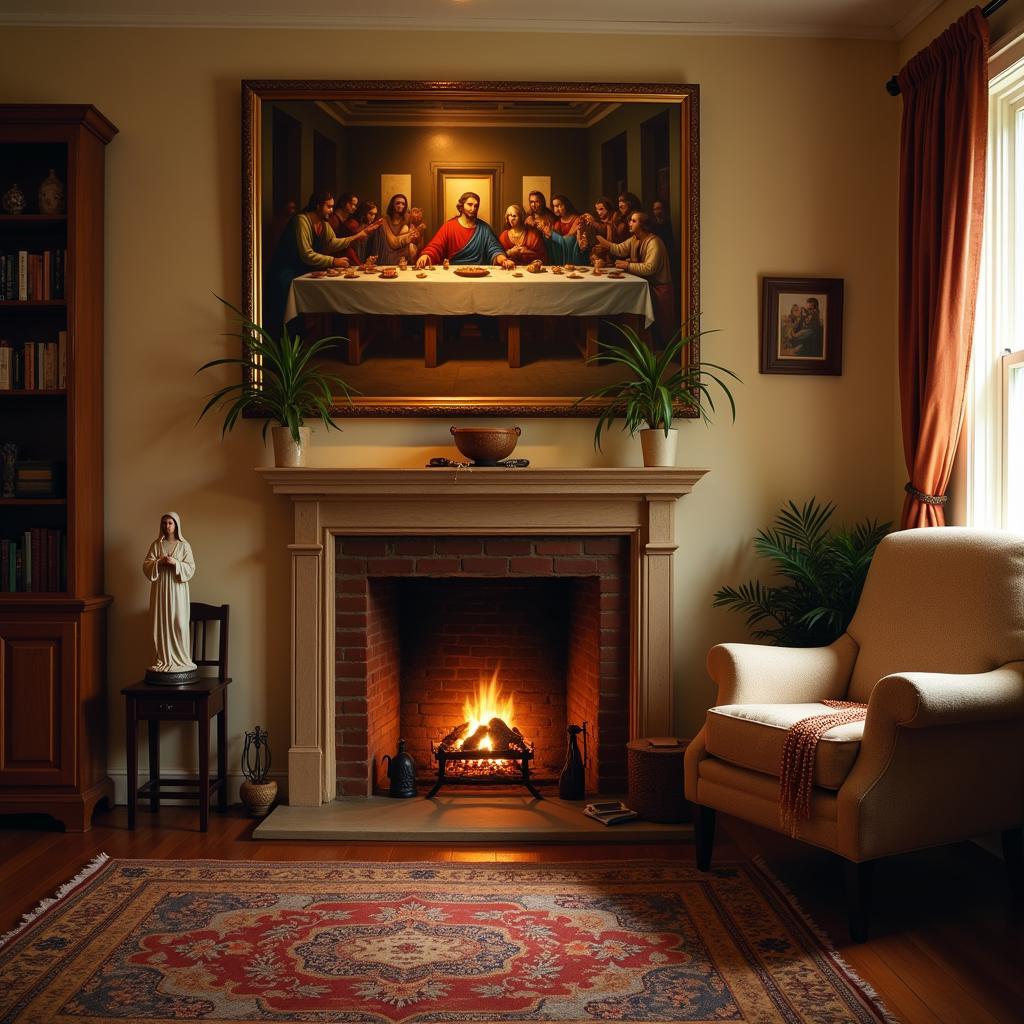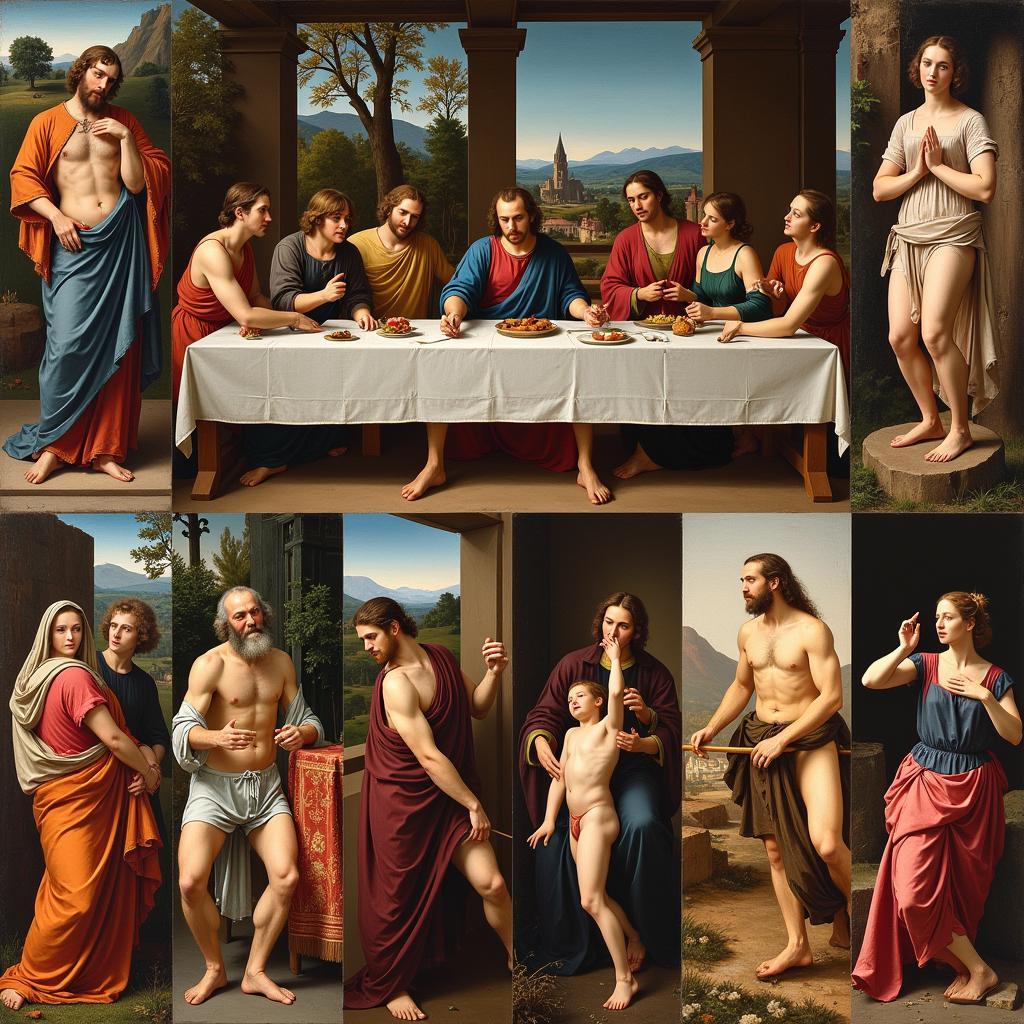Gaudi Art and the Invisible: Exploring the Unseen Forces Shaping Architectural Genius
Antoni Gaudí’s architectural masterpieces, like the Sagrada Família and Park Güell, are instantly recognizable. Their vibrant mosaics, organic forms, and dreamlike quality captivate the eye. But what about the “invisible” forces at play in Gaudi art? What unseen elements shaped his unique vision and continue to inspire awe and wonder? This exploration delves into the intricate relationship between Gaudi’s work and the intangible influences that molded his genius.
The Spiritual Underpinnings of Gaudi’s Architecture
Gaudí was a deeply religious man, and his faith permeated every aspect of his work. For him, nature was God’s creation, and its intricate patterns and forms provided the ultimate blueprint for architecture. He believed that the invisible hand of the divine guided his designs, and he sought to capture the spiritual essence of the natural world in his buildings. This reverence for nature is evident in the organic curves and flowing lines of his structures, which mimic the shapes of trees, shells, and other natural wonders. He saw the unseen forces of creation reflected in the visible world and translated them into breathtaking architectural forms.
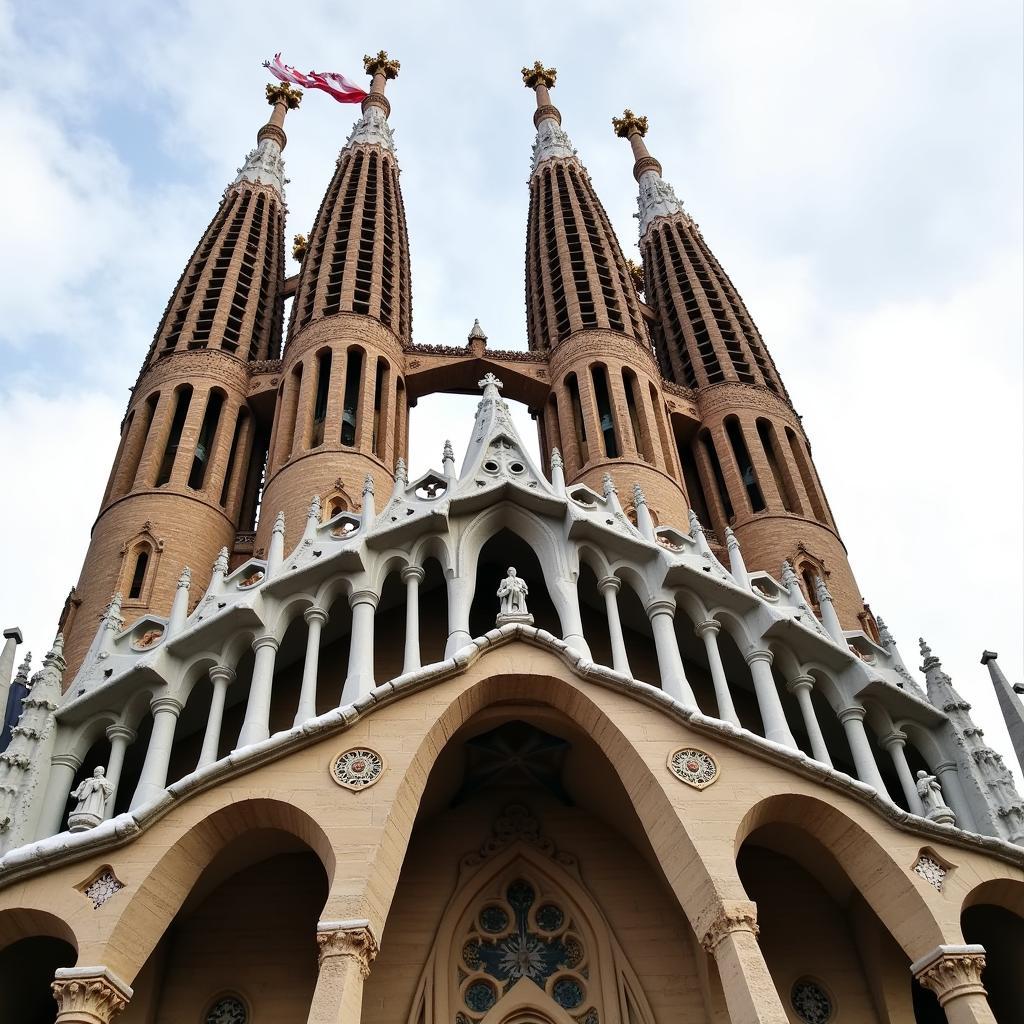 Sagrada Familia's spiritual influence showcased through its intricate details and soaring spires
Sagrada Familia's spiritual influence showcased through its intricate details and soaring spires
Nature’s Blueprint: Biomimicry in Gaudi Art
Gaudi’s fascination with nature extended beyond its spiritual significance. He also meticulously studied its structural principles, applying the concept of biomimicry to his designs. He observed how trees distribute weight and how shells achieve their strength, incorporating these principles into his architectural innovations. By emulating the invisible forces that shape the natural world, Gaudí created structures that were both aesthetically stunning and structurally sound. The “invisible” logic of nature became visible in the innovative forms of his buildings.
The intricate systems of columns, arches, and vaults in his works often mirror the skeletal structures found in living organisms. This attention to the unseen mechanics of nature allowed him to create buildings that are not only beautiful but also incredibly efficient and resilient.
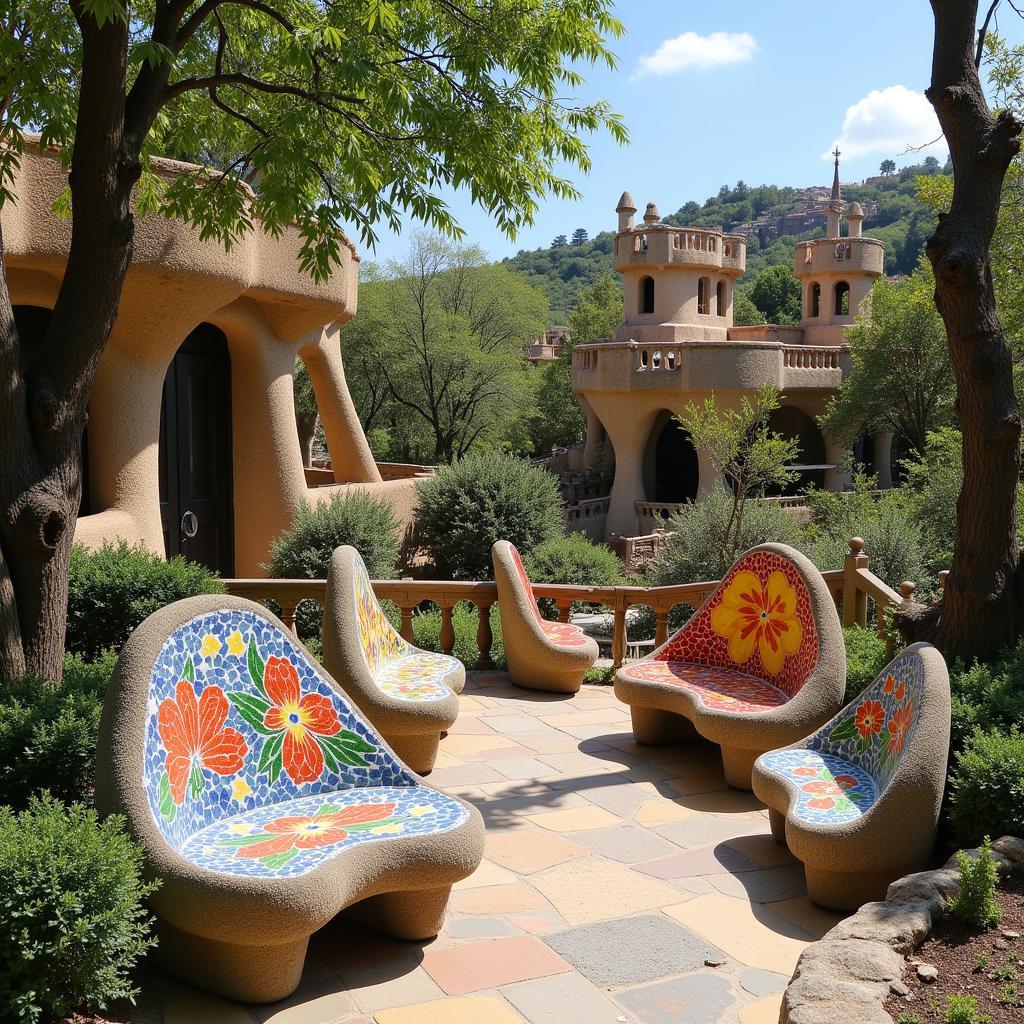 Park Güell's mosaic benches and organic structures blend seamlessly with the surrounding nature
Park Güell's mosaic benches and organic structures blend seamlessly with the surrounding nature
Light and Shadow: The Invisible Sculptors of Space
Gaudí understood the profound impact of light and shadow on the perception of space. He meticulously designed his buildings to capture and manipulate natural light, creating dynamic and ever-changing environments. The interplay of light and shadow becomes an invisible sculptor, shaping the experience of those who inhabit his spaces. The stained glass windows in the Sagrada Família, for example, cast vibrant hues across the interior, transforming the space throughout the day. This careful orchestration of light and shadow adds another layer of meaning to his work, hinting at the invisible forces of time and the ephemeral nature of beauty.
Gaudi’s Legacy: The Enduring Power of the Invisible
Gaudi’s innovative approach to architecture continues to inspire awe and wonder. His ability to blend the visible and the invisible, to capture the spiritual essence of nature and translate it into tangible forms, has cemented his place as one of history’s greatest architects. The “invisible” forces that shaped his vision continue to resonate with us today, reminding us of the power of imagination, the beauty of nature, and the enduring legacy of human creativity.
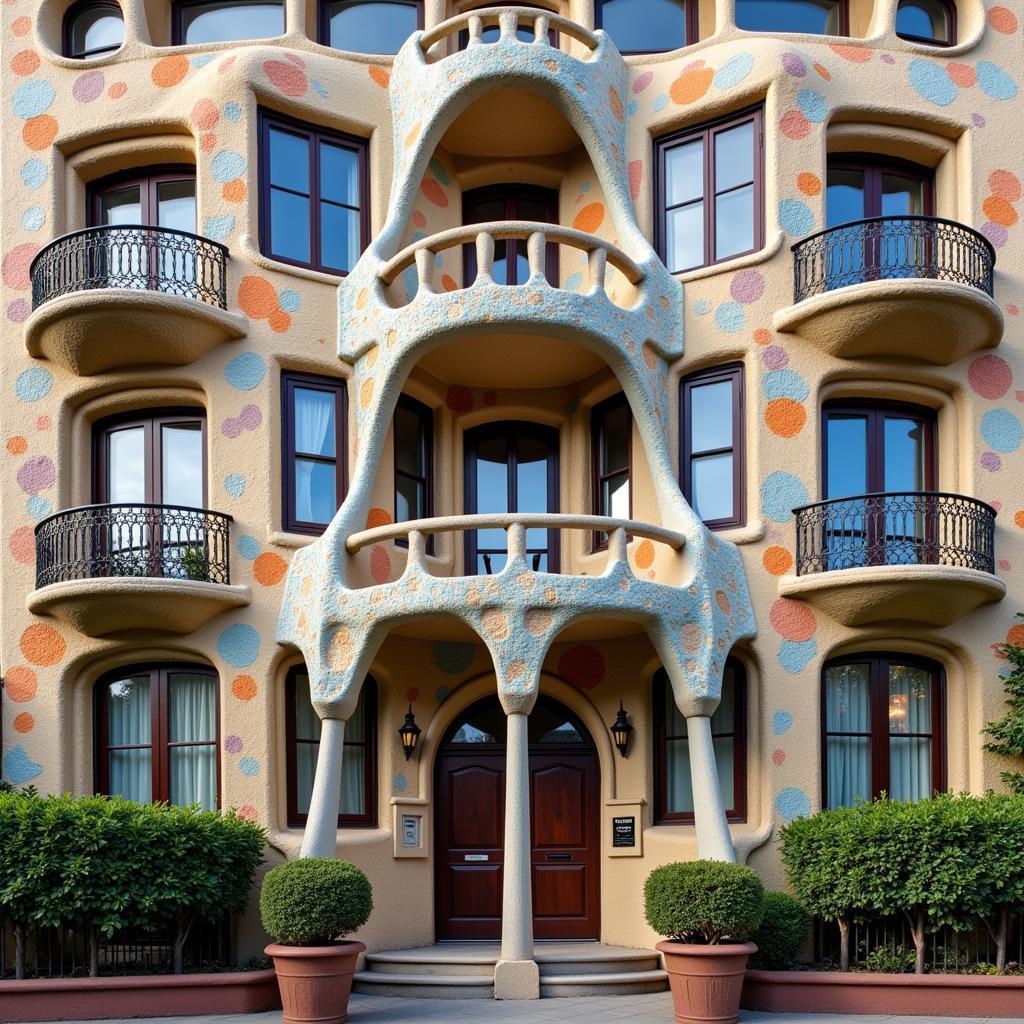 Casa Batlló's facade, showcasing Gaudí's unique and imaginative use of color, form, and light
Casa Batlló's facade, showcasing Gaudí's unique and imaginative use of color, form, and light
Gaudí’s legacy is a testament to the power of the unseen. By embracing the invisible forces of nature, spirituality, and light, he created architectural masterpieces that continue to captivate and inspire. His work invites us to look beyond the surface, to appreciate the subtle nuances and hidden meanings that give his buildings their enduring magic.
FAQ
- What inspired Gaudí’s unique architectural style? His deep religious faith and profound connection to nature were primary influences.
- What is biomimicry, and how did Gaudí use it? Biomimicry is imitating nature’s designs. Gaudí used it by incorporating natural forms and structural principles into his architecture.
- Why is light so important in Gaudí’s work? He saw light as an “invisible sculptor,” manipulating it to create dynamic and spiritually charged spaces.
- What is Gaudí’s most famous work? The Sagrada Família, still under construction, is his most iconic and ambitious project.
- Where can I see Gaudí’s architecture? Primarily in Barcelona, Spain, where many of his masterpieces are located.
- How does Gaudí’s work relate to the “invisible”? His work reflects unseen influences like faith, natural forces, and the interplay of light and shadow.
- Why is Gaudí considered an architectural genius? His innovative designs, deep symbolism, and masterful use of materials set him apart.
Related Articles You Might Find Interesting
- Exploring the Symbolism in Gaudi’s Architecture
- The Influence of Nature on Gaudi’s Designs
- A Guide to Visiting Gaudi’s Masterpieces in Barcelona
Need help planning your Gaudi art adventure? Contact us! Phone: 02462573573, Email: danteum@gmail.com Or visit us at: Savico Megamall, 7-9 Đ. Nguyễn Văn Linh, Gia Thụy, Long Biên, Hà Nội 10000, Việt Nam. We have a 24/7 customer support team.

